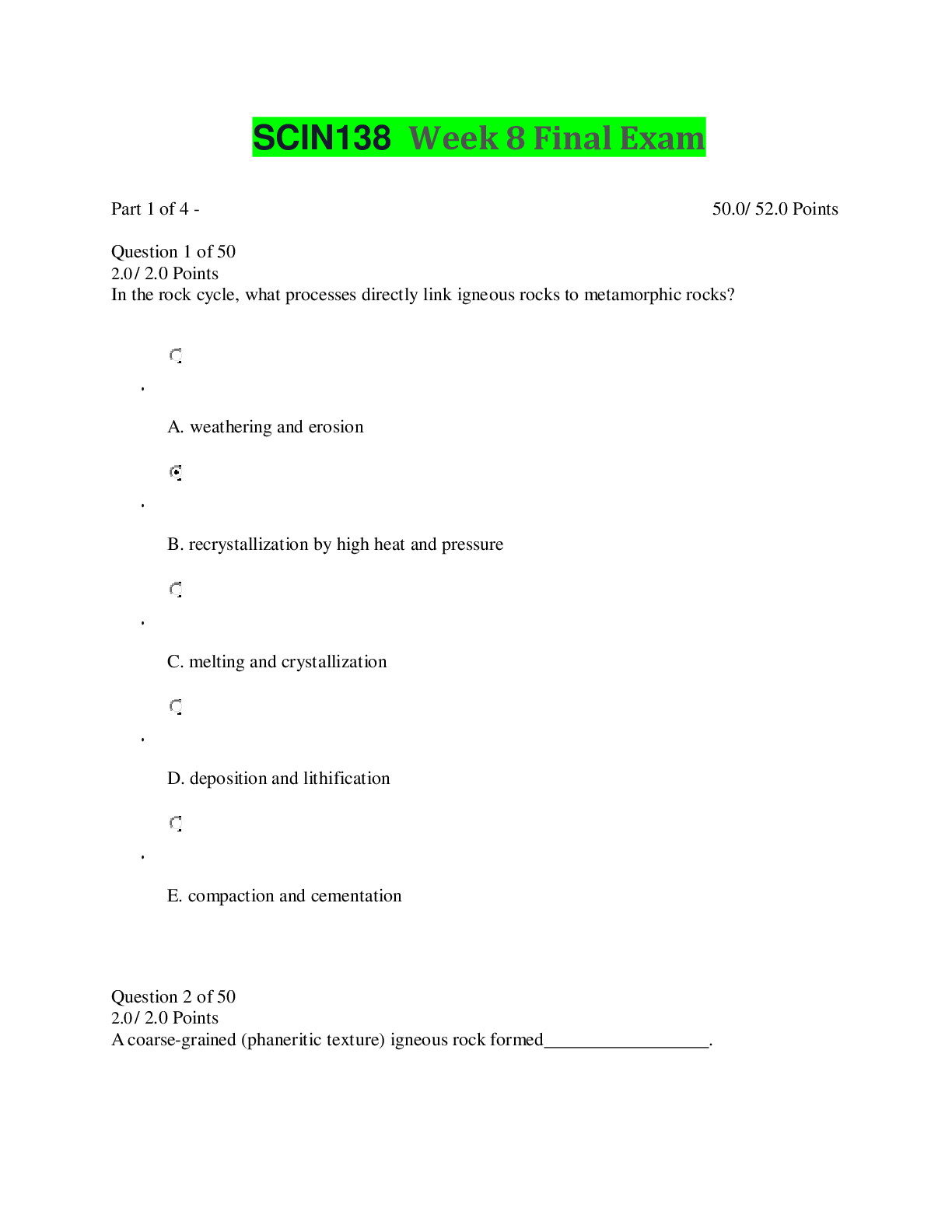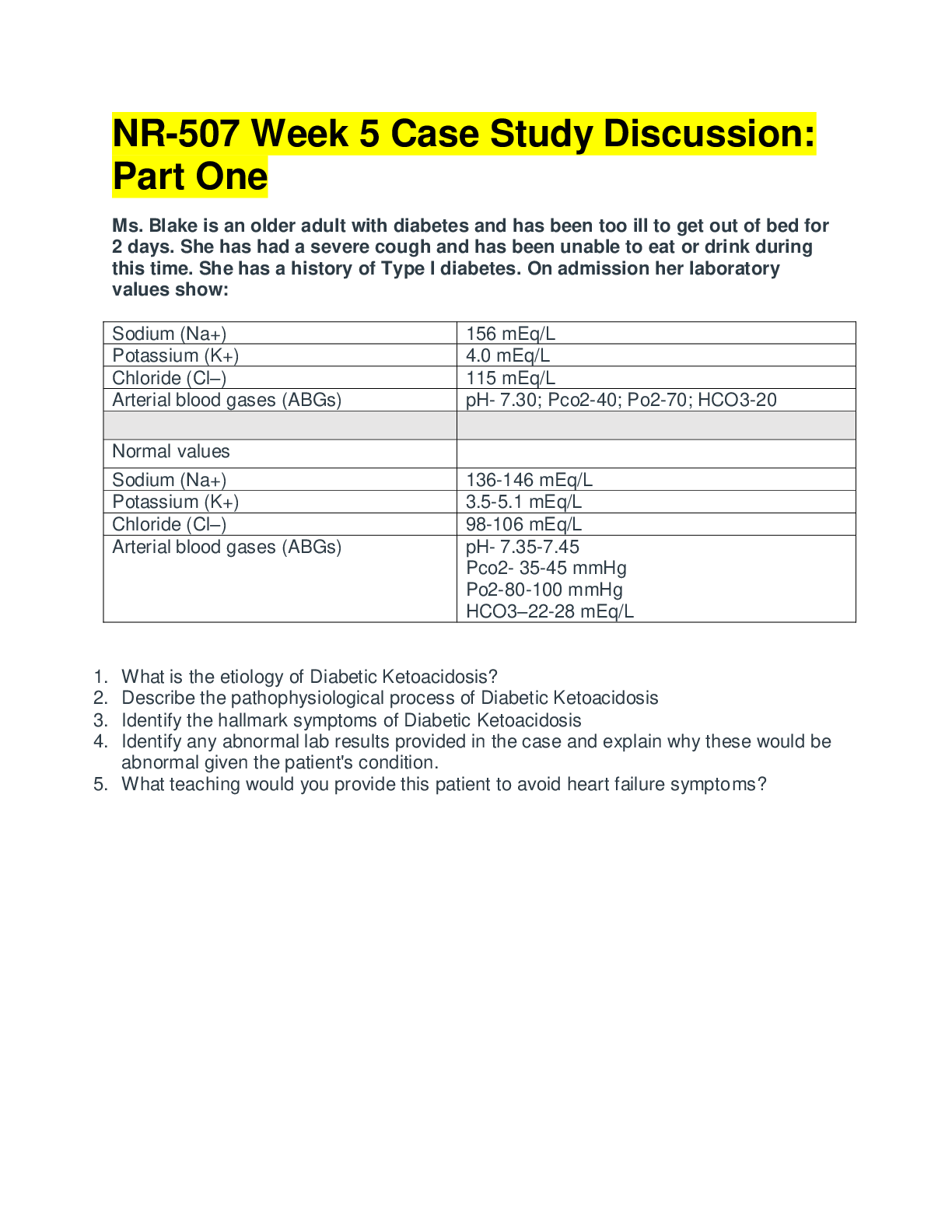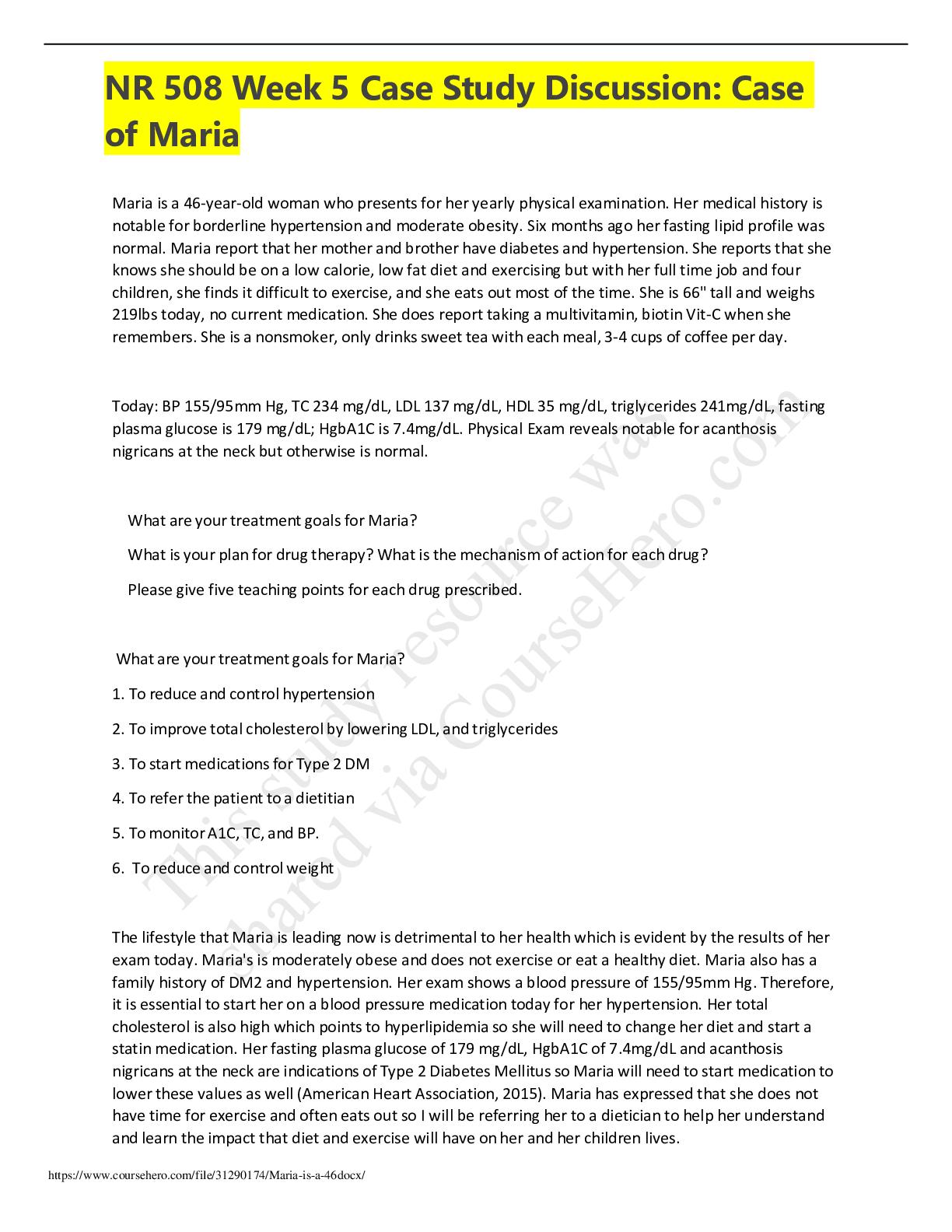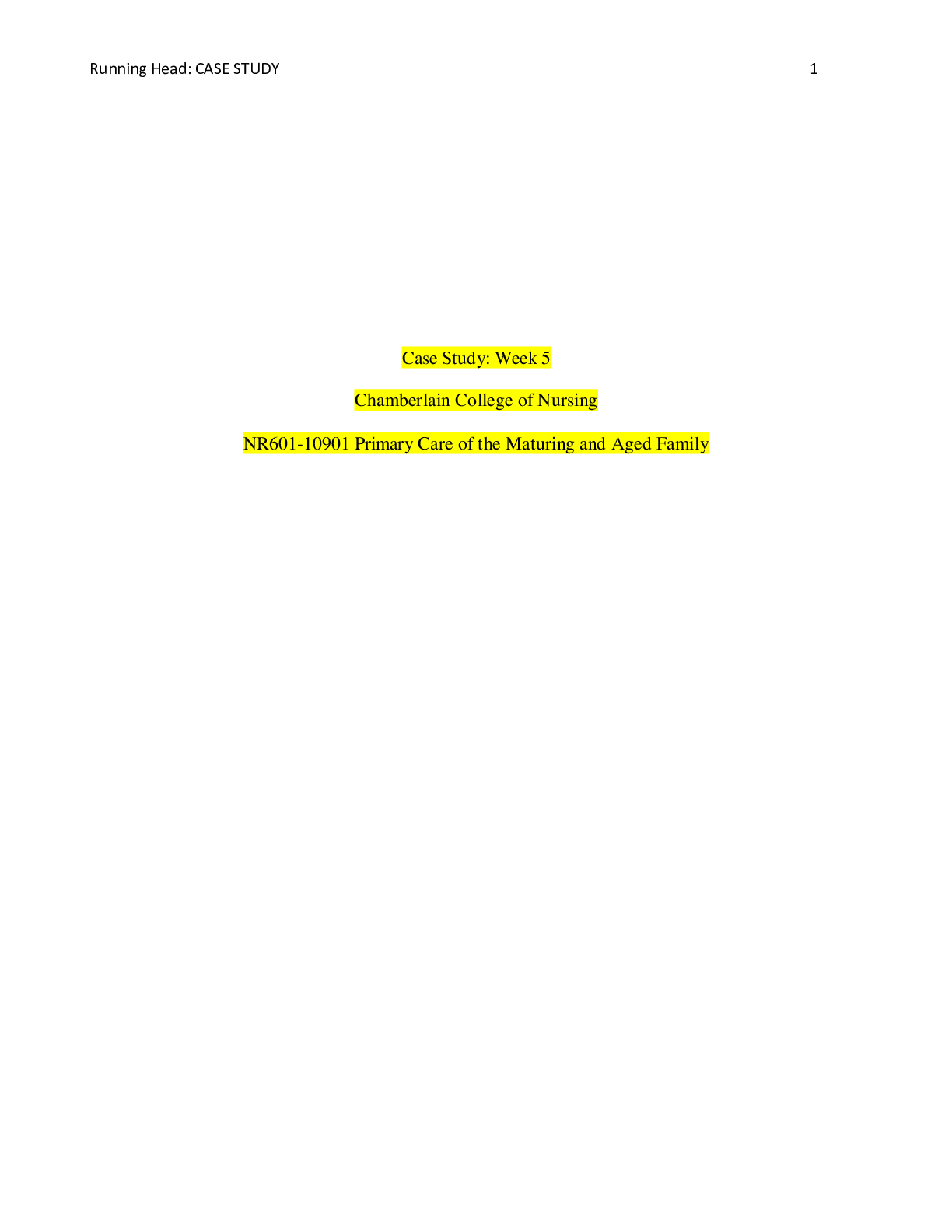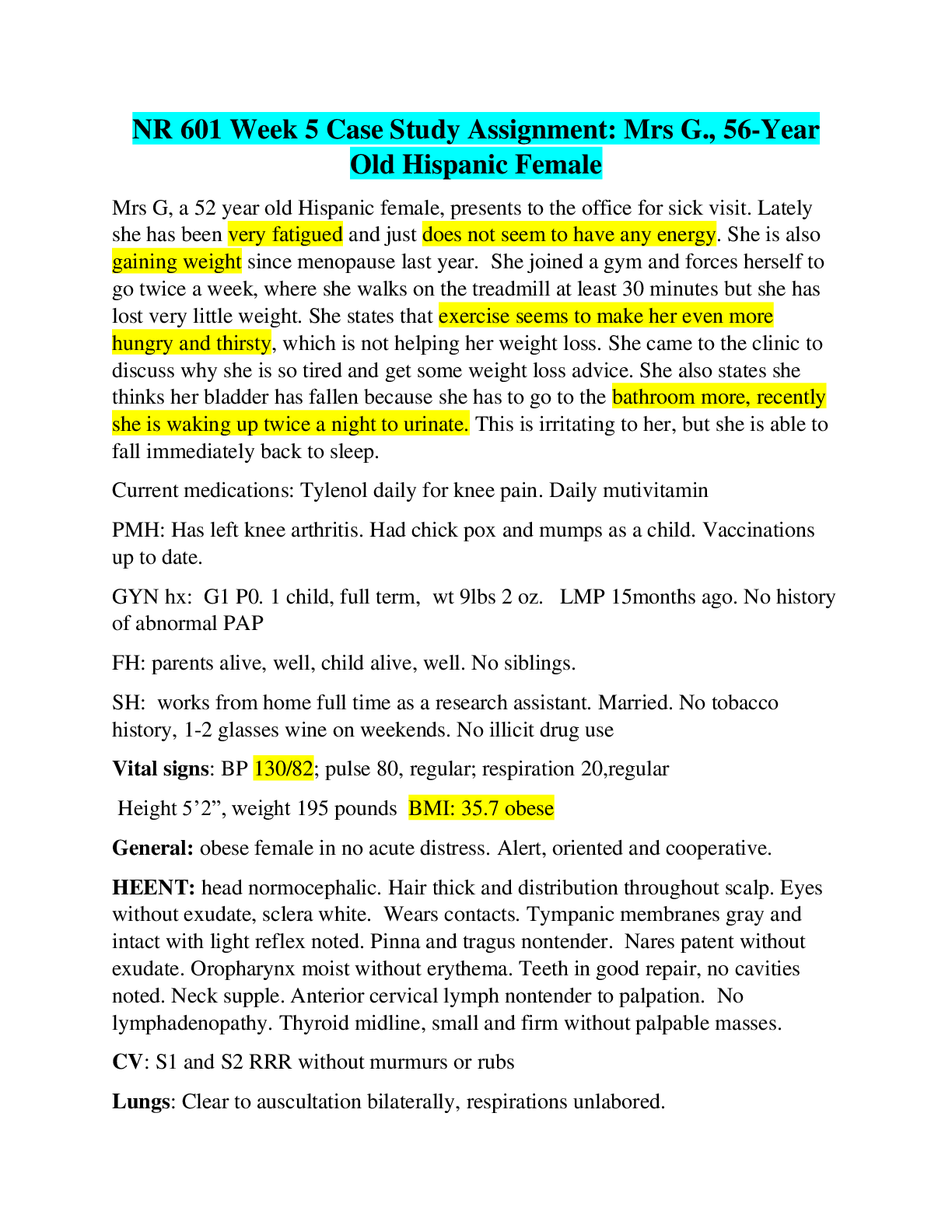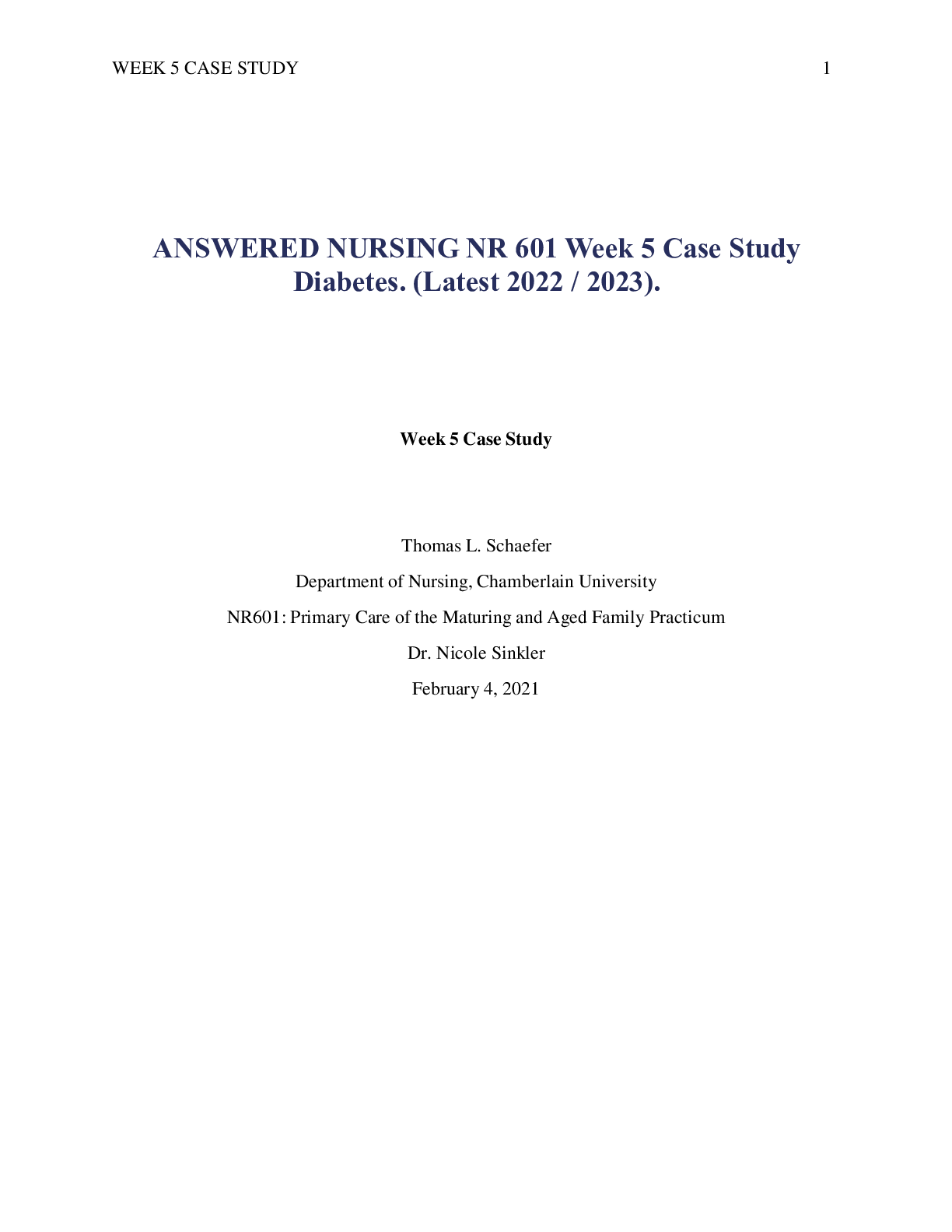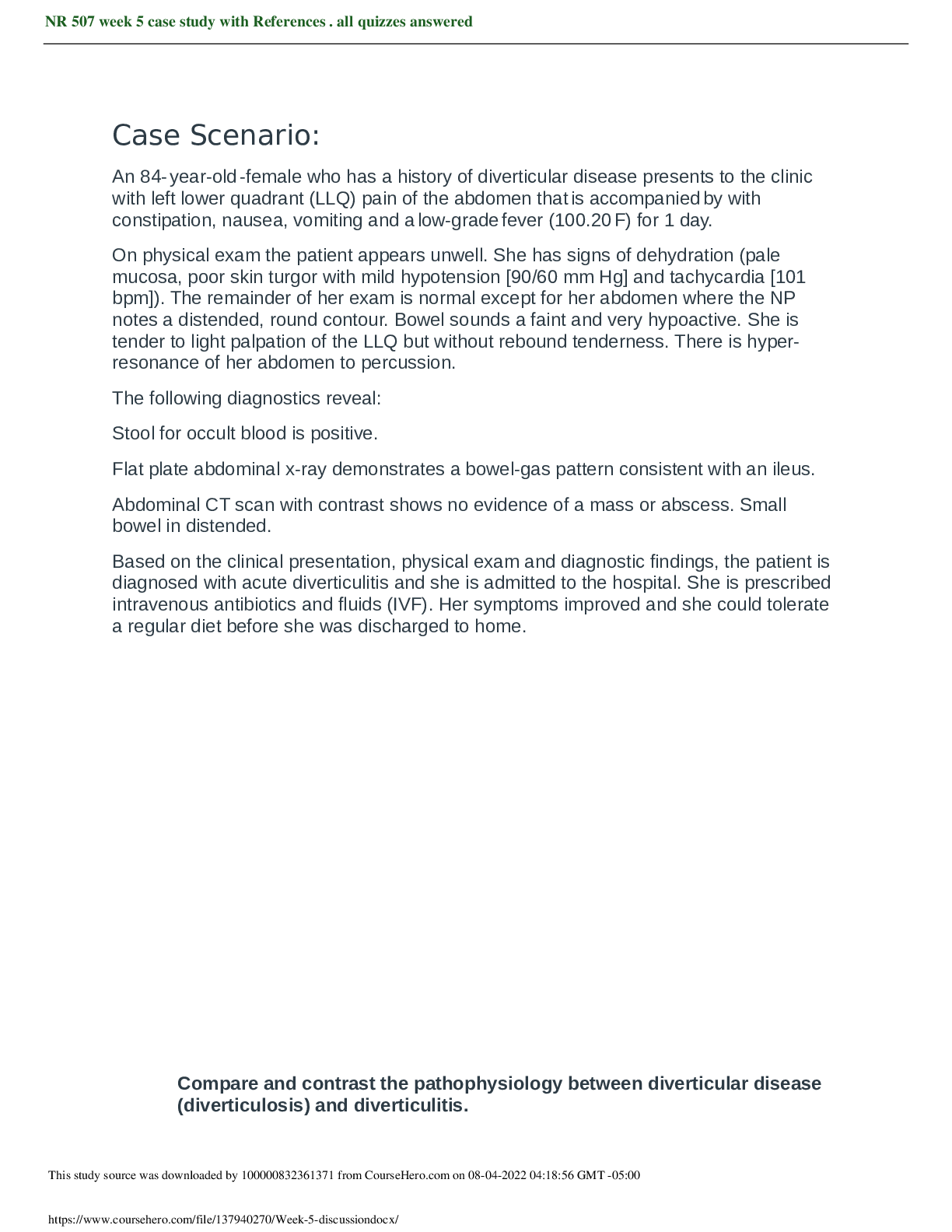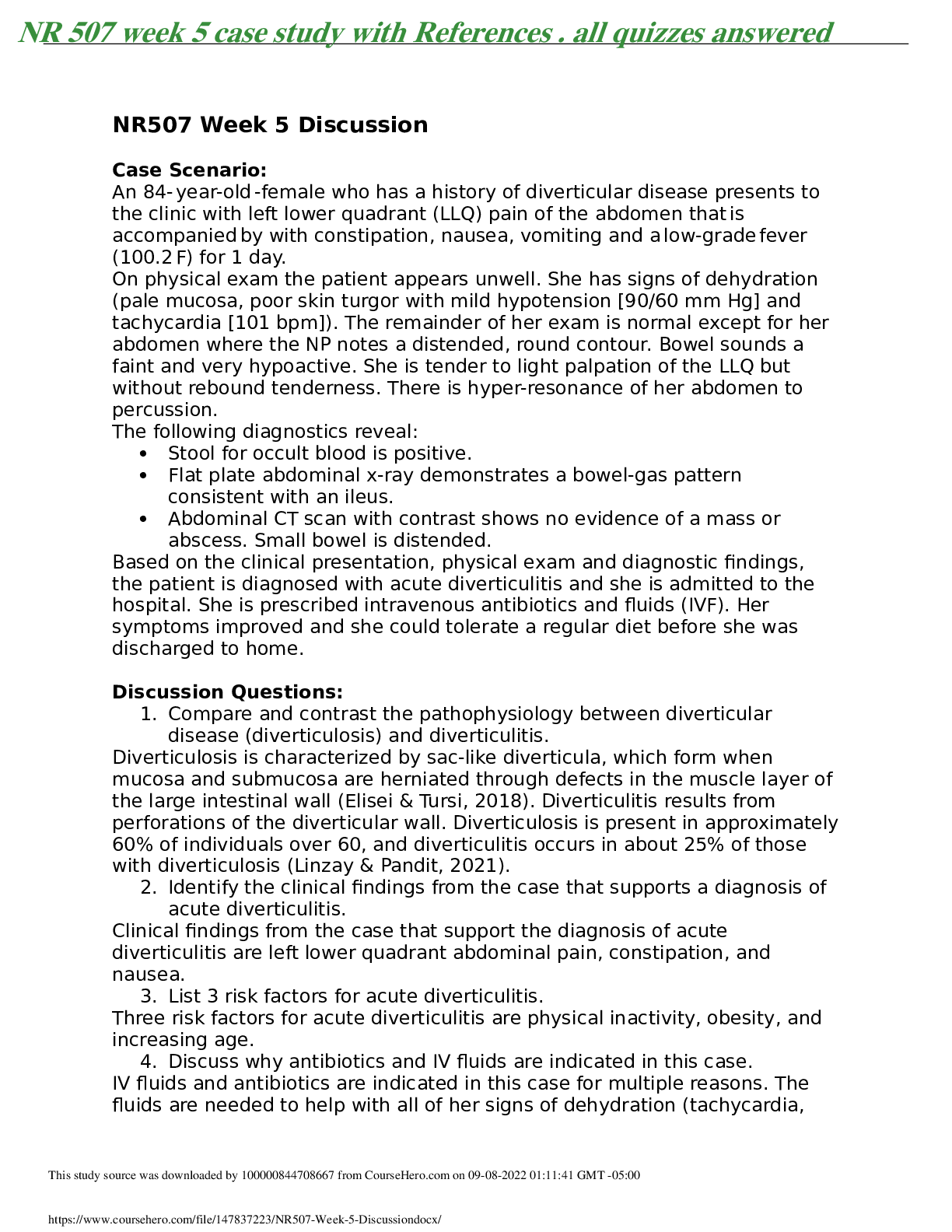NR 601 week 5 case study./ COMPLETE SOLUTION.- RATED A
Document Content and Description Below
Case Study Chamberlain College of Nursing NR601: Primary Care of the Maturing and Aged Family May, 2018 Introduction The purpose of this paper is to demonstrate the ability to analyze the subjective a... nd objective information from the case study to formulate a management plan using evidenced based guidelines. It also demonstrates the student’s ability to write SOAP note in chronological order. In this case study the assessment, treatment plan, medication and its cost, and SOAP note will be discussed in detailed. Assessment Based on the chief complaints, subjective, and objective findings patient’s primary diagnosis is type 2 diabetes mellitus (E11). The pathophysiologic mechanism of type 2 diabetes involves insulin resistance and decreased insulin secretion by beta cells of pancreas (McCance, Huether, Brashers, & Rote, 2013). The genetic, epigenetic, and environmental factors interfere the ability to sense increased blood glucose, insulin synthesis, and insulin secretion, which causes type 2 diabetes. The prevalence of type 2 diabetes increased with age, is higher among African American female, but obesity, hypertension, physical inactivity, and family history predominantly increased the risk of type 2 diabetes (McCance et al., 2013). Polyuria, polydipsia, and polyphagia are the classis symptoms of diabetes, but patient may present with nonspecific symptoms such as fatigue, pruritus, recurrent infection, visual change, paresthesia, or weakness (McCance et al., 2013). Based on the information given, the pertinent positive findings include very fatigued, no energy, weight gain, increased hunger and thrust, and increased frequency of urination for past 3 month. The polydipsia, polyuria, and polyphagia also known as 3P are the hallmark symptoms of diabetes (American Diabetes Association [ADA], 2017). The laboratory finding indicates her hemoglobin A1C is 6.9%, total cholesterol is 230 mg/dl, LDL 144mg/dl, VLDL 36 mg/dl, HDL 38mg/dl and triglycerides 232. The hemoglobin A1C of ≥ to 6.5% is one of the criteria that indicates diabetes (National Diabetes Education Initiative [NDEI], 2016). Mrs. G. blood glucose level of 126 which is at the meets the criteria for diabetes but has limited information on fasting status. The fasting plasma glucose of ≥ 126 is indicative to diabetes (NDEI, 2016).Her history of delivering a baby who weigh 9lb 2 oz is another risk factor of type 2 diabetes according to the ADA guidelines (NDEI, 2016). In addition, she has 1+ glucose and small protein on her UA. She weighs 185 pounds and her BMI based on her height and weight is 33.3 which is considered obese. Type 2 diabetes is most common in overweight or obese because excess weight causes some degree of insulin resistance (ADA, 2017). Other pertinent positive information that helps to diagnose type 2 diabetes includes obesity, dyslipidemia, and being Hispanic age greater than 50 years because risk of type 2 increases with age, obesity, lack of physical activity, dyslipidemia, and in certain racial or ethic groups such as Hispanic (ADA, 2017). The pertinent negative findings include no pruritus, recurrent infection, visual change, paresthesia, or weakness (McCance et al., 2013). [Show More]
Last updated: 2 years ago
Preview 1 out of 24 pages

Buy this document to get the full access instantly
Instant Download Access after purchase
Buy NowInstant download
We Accept:

Reviews( 0 )
$11.00
Can't find what you want? Try our AI powered Search
Document information
Connected school, study & course
About the document
Uploaded On
Jun 19, 2022
Number of pages
24
Written in
Additional information
This document has been written for:
Uploaded
Jun 19, 2022
Downloads
0
Views
91

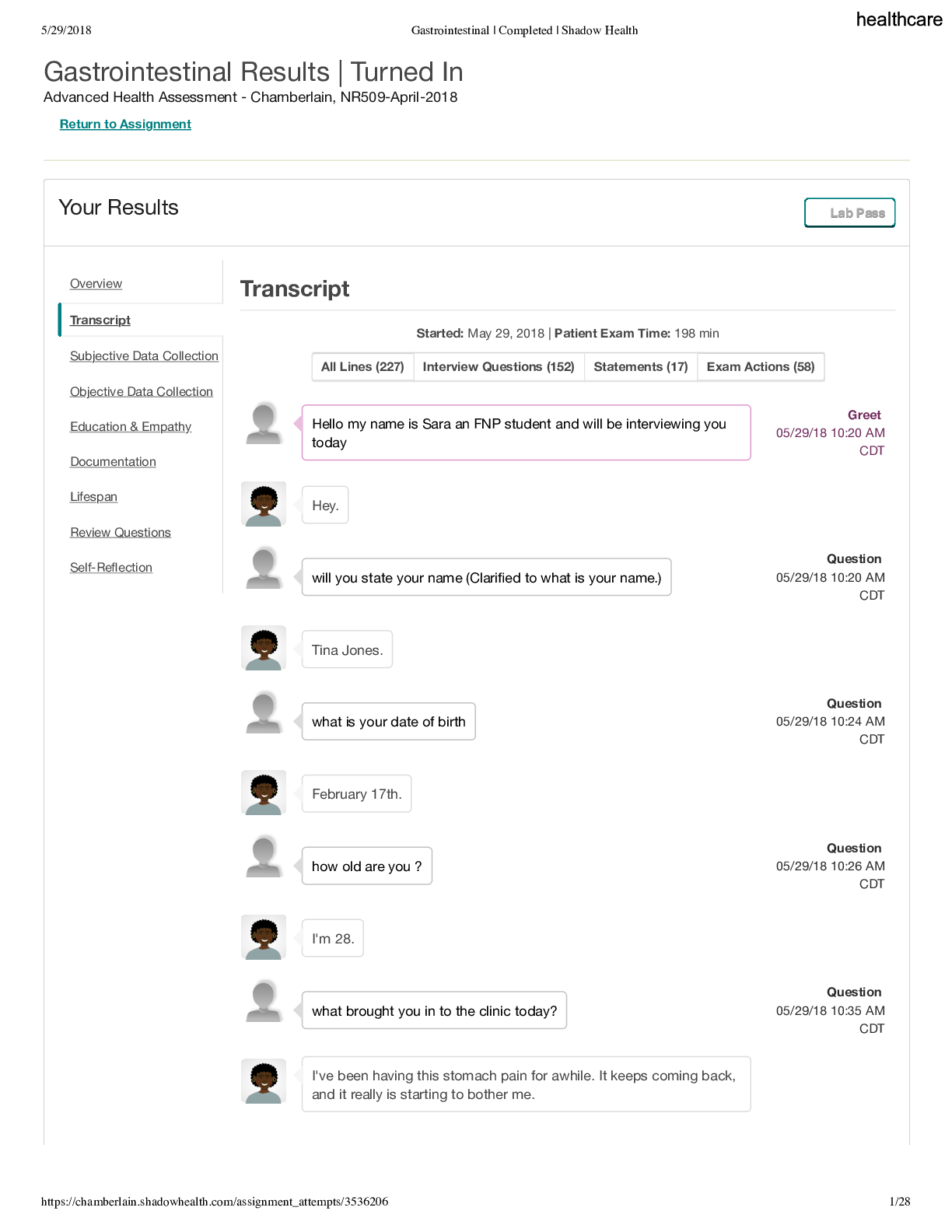
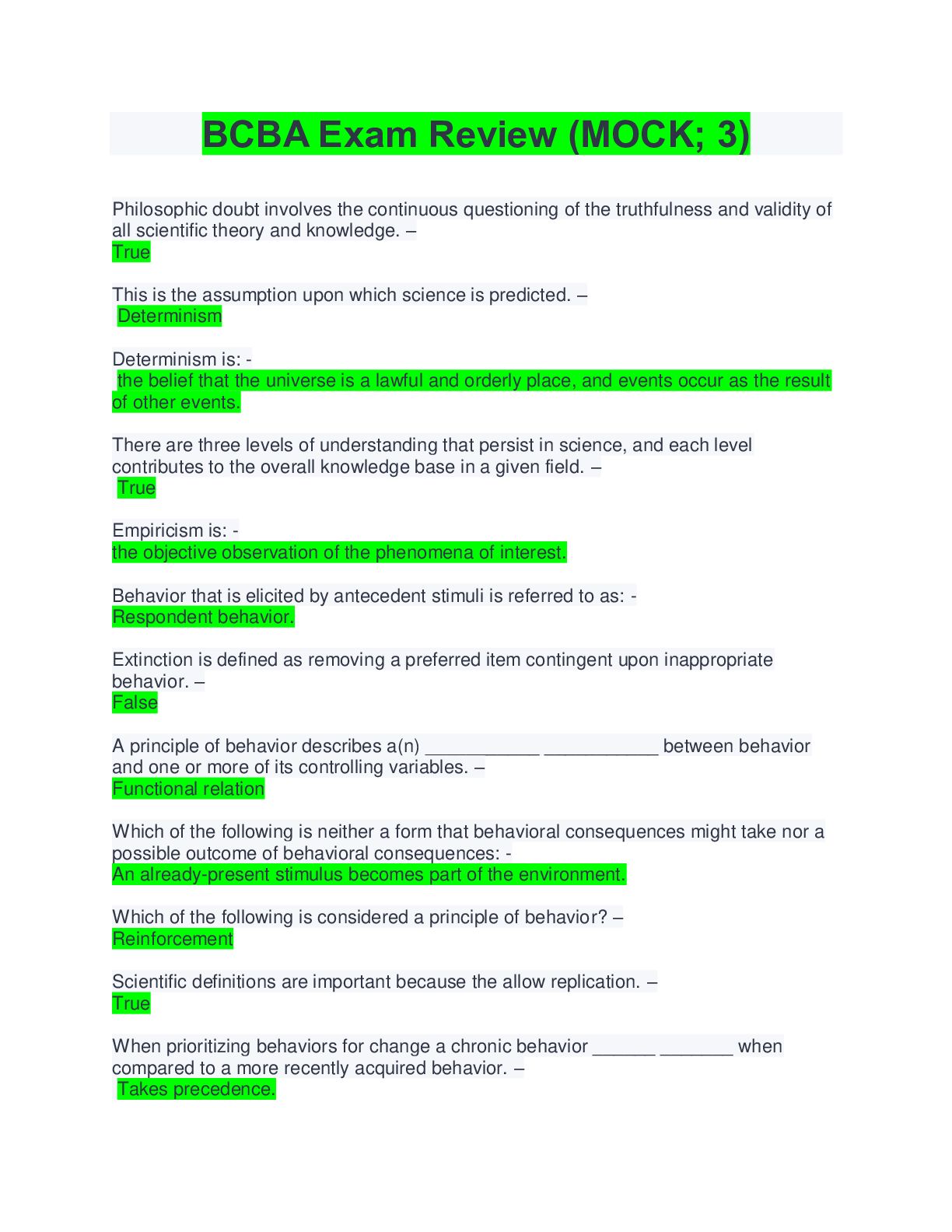
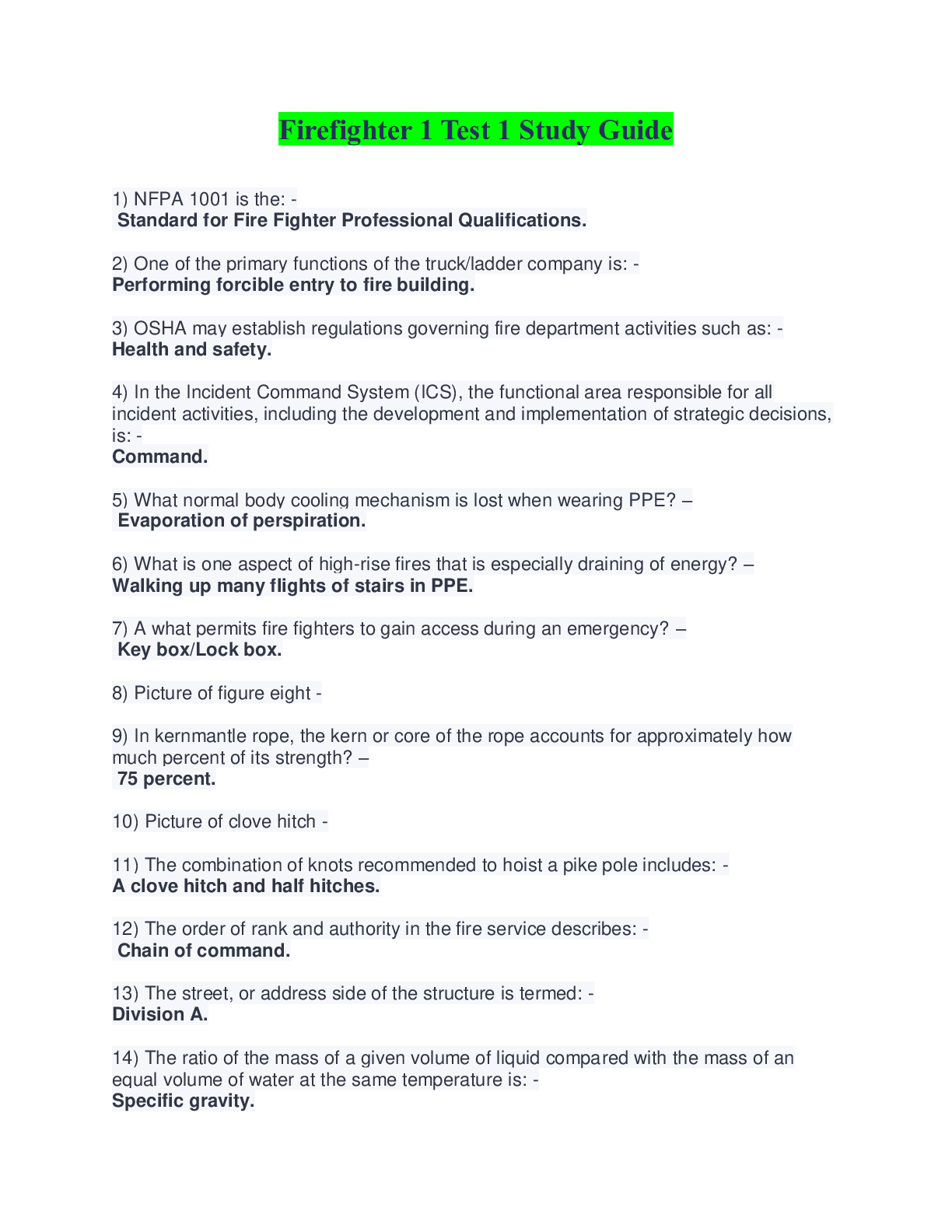
 (1).png)
 (1).png)
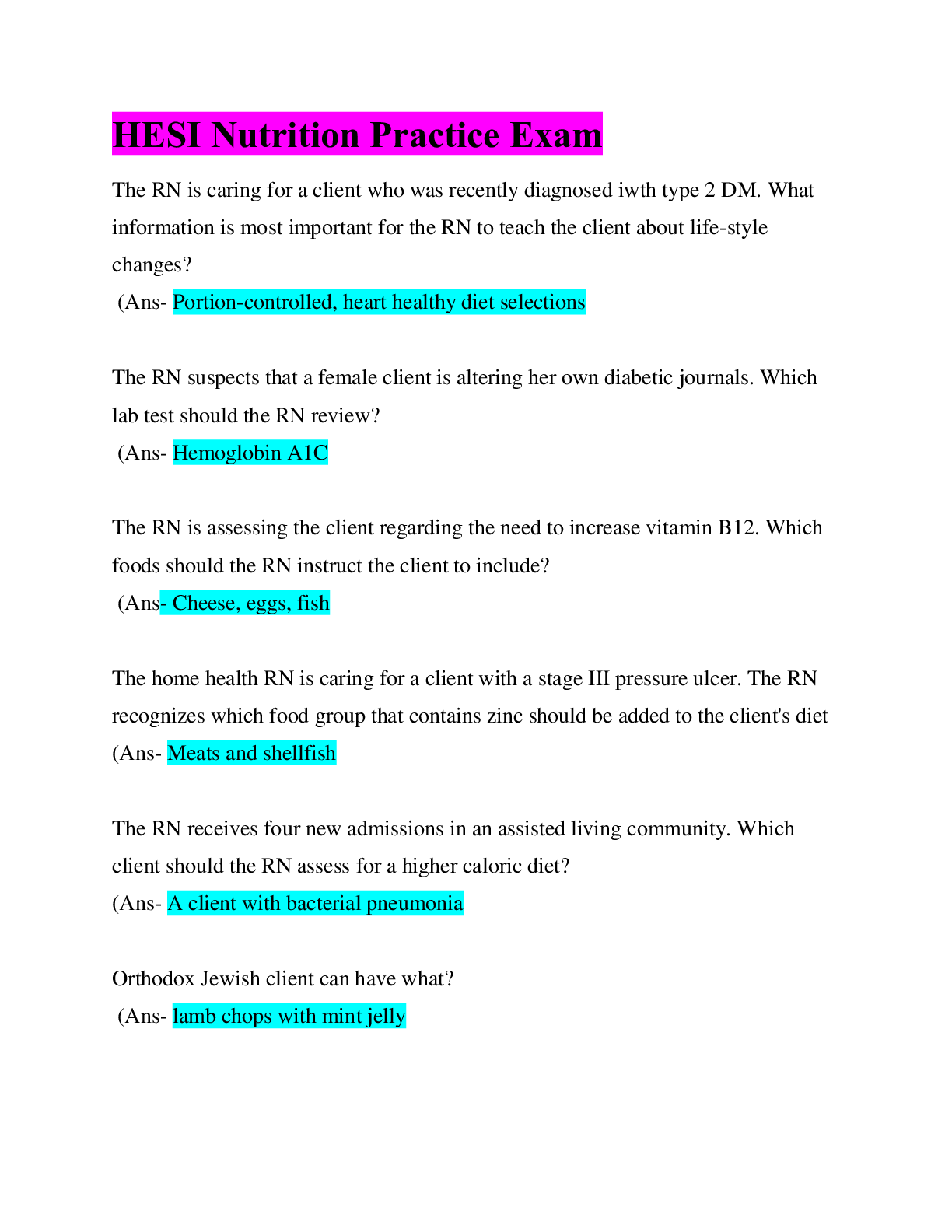
 (1).png)
 (1).png)
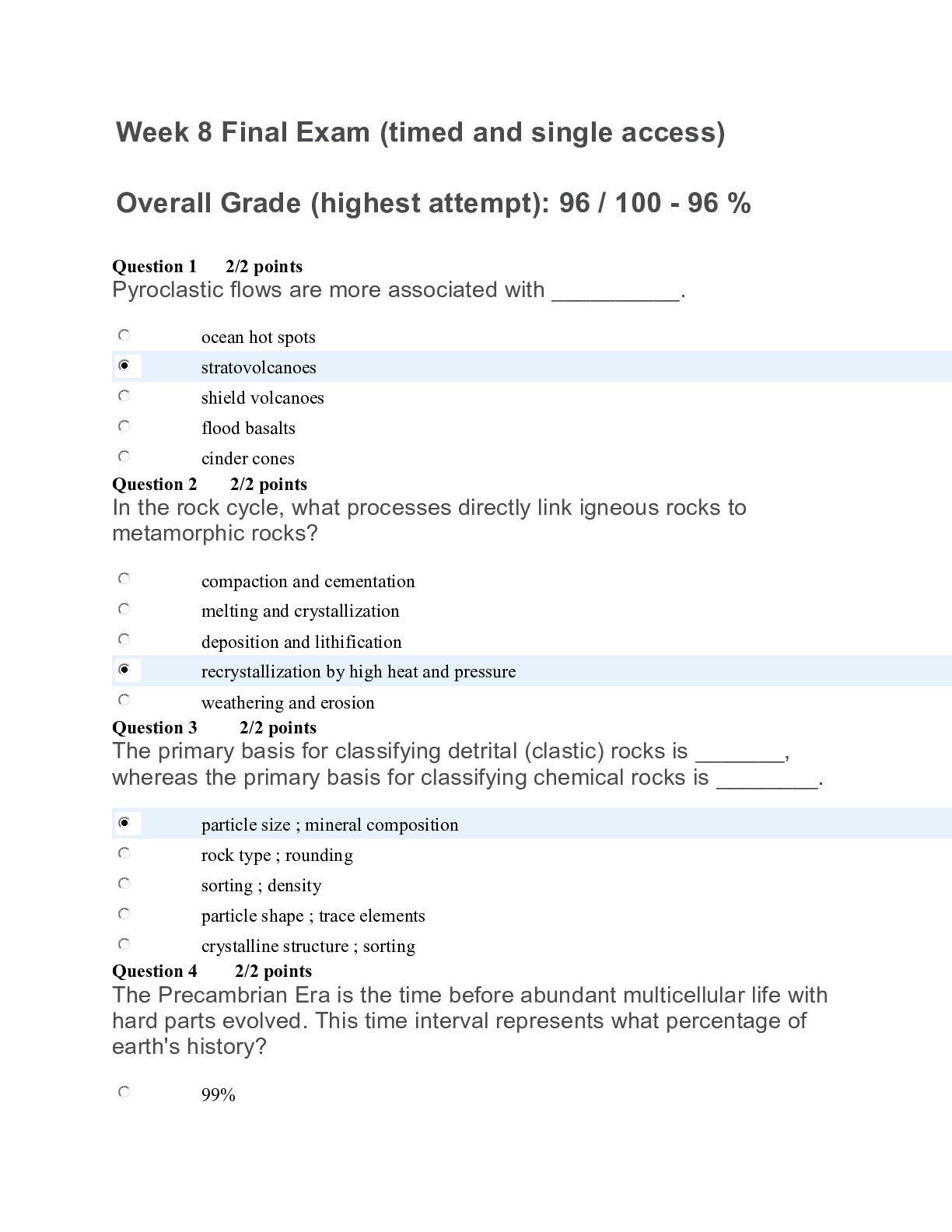
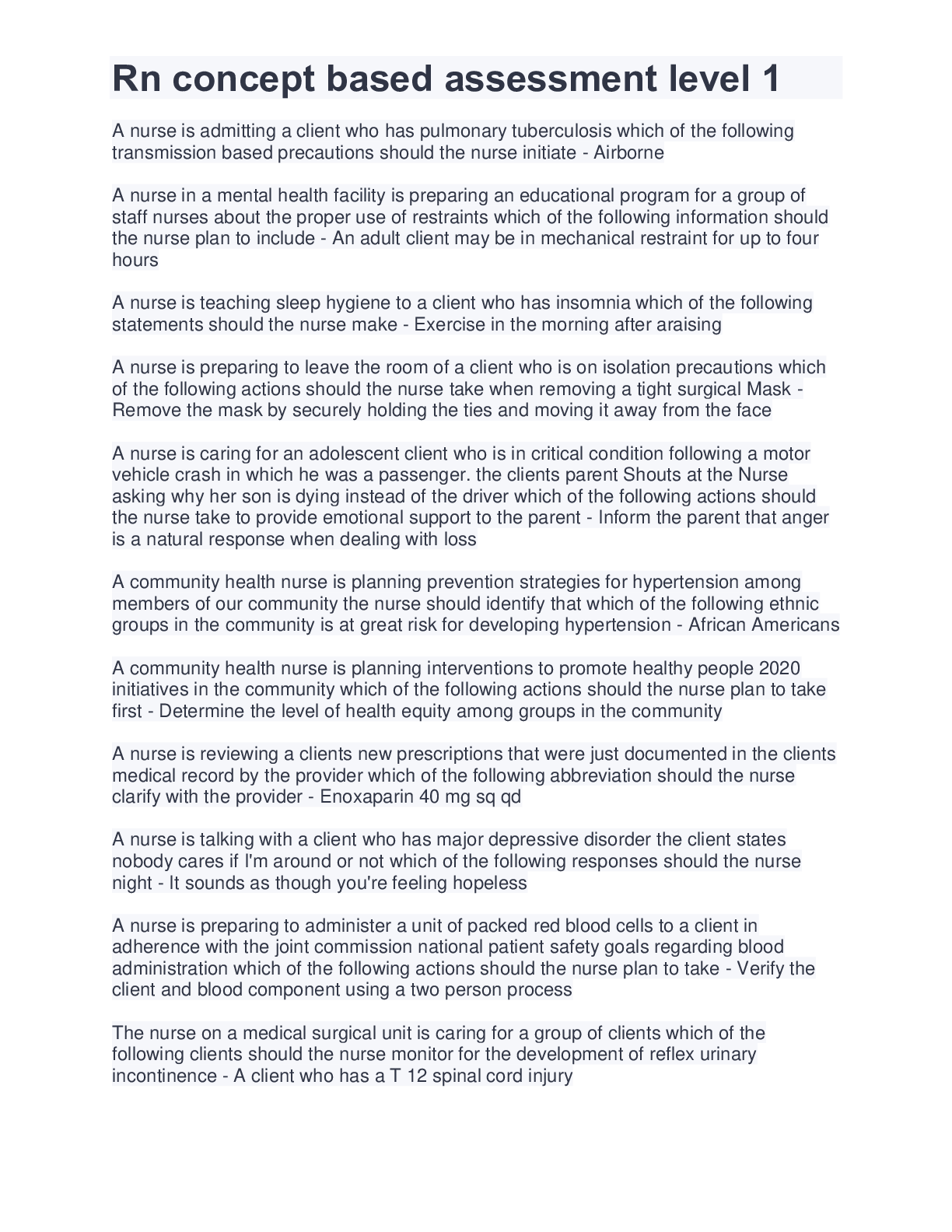
.png)
